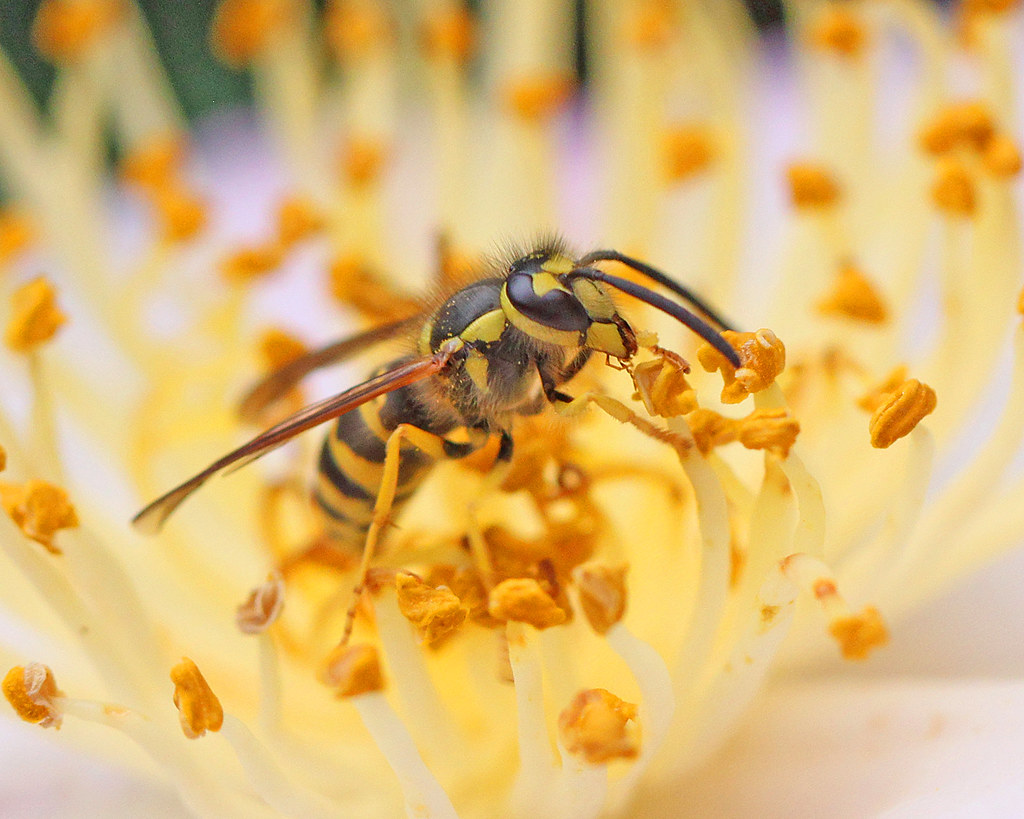Yellow jackets, known for their sharp stings and territorial behavior, are notorious for becoming more aggressive as summer transitions into fall. But what exactly drives this shift in behavior? This article will explain why yellow jackets become more aggressive in late summer, debunk common myths, and provide insights into their biology and behavior.
 As summer progresses, the dynamics within the yellow jacket colony change.In the late summer, the queen stops laying eggs, and the colony’s focus shifts. Instead of collecting protein for the young, the wasps seek out sugary foods to sustain themselves, as they no longer need to feed larvae. This shift in diet can make them more aggressive, particularly around human food and drinks, as they seek out sugar.
As summer progresses, the dynamics within the yellow jacket colony change.In the late summer, the queen stops laying eggs, and the colony’s focus shifts. Instead of collecting protein for the young, the wasps seek out sugary foods to sustain themselves, as they no longer need to feed larvae. This shift in diet can make them more aggressive, particularly around human food and drinks, as they seek out sugar.
The Life Cycle of Yellow Jackets
Yellow jackets have a unique life cycle that plays a critical role in their late-summer aggression. These wasps are social insects that live in colonies, each led by a queen. During the early spring, the queen emerges from hibernation to lay eggs and establish a new colony. Throughout the spring and early summer, worker wasps hatch and focus on collecting food, typically protein, to nourish the developing larvae. As summer progresses, the dynamics within the yellow jacket colony change.In the late summer, the queen stops laying eggs, and the colony’s focus shifts. Instead of collecting protein for the young, the wasps seek out sugary foods to sustain themselves, as they no longer need to feed larvae. This shift in diet can make them more aggressive, particularly around human food and drinks, as they seek out sugar.
As summer progresses, the dynamics within the yellow jacket colony change.In the late summer, the queen stops laying eggs, and the colony’s focus shifts. Instead of collecting protein for the young, the wasps seek out sugary foods to sustain themselves, as they no longer need to feed larvae. This shift in diet can make them more aggressive, particularly around human food and drinks, as they seek out sugar.
Competition for Resources
One of the reasons yellow jackets become more aggressive in late summer is due to competition for limited resources. As food sources dwindle, yellow jackets become more desperate and are more likely to defend their territory fiercely. The increase in colony population also means more mouths to feed, intensifying competition and aggression among the wasps. With fewer protein sources available, yellow jackets begin scavenging for sugary substances. They are often attracted to picnics, barbecues, and garbage cans, where they can find sugary drinks, fruits, and food scraps.Hormonal Changes in Yellow Jackets
As yellow jackets near the end of their life cycle in late summer, changes in their colony’s hierarchy and hormones can also contribute to their aggression. During this time, the colony produces new queens and male wasps, whose main purpose is reproduction. The focus shifts from gathering food to protecting the new queens and ensuring the survival of the colony’s future generation. These hormonal changes heighten the wasps’ protective instincts, causing them to become more territorial and aggressive. They are more likely to attack when threatened, including humans, especially if they feel their nest is being disturbed.Misconceptions About Yellow Jackets
There are many myths surrounding yellow jackets and their aggressive behavior, particularly in late summer. Here, we debunk some of the most common misconceptions with facts based on scientific research.| Myth | Fact |
| Yellow jackets are aggressive year-round. | Yellow jackets only become noticeably more aggressive in late summer and early fall. |
| Yellow jackets attack without reason. | Yellow jackets usually attack when they feel threatened or when their nest is disturbed. |
| All wasps, including yellow jackets, live year-round. | Most yellow jacket colonies die off after the first frost, with only fertilized queens surviving. |
| Yellow jackets only eat sugary foods. | Early in the season, they primarily eat protein but switch to sugary foods later in the year. |
| Yellow jackets die after stinging like bees. | Unlike bees, yellow jackets sting multiple times without dying. |




